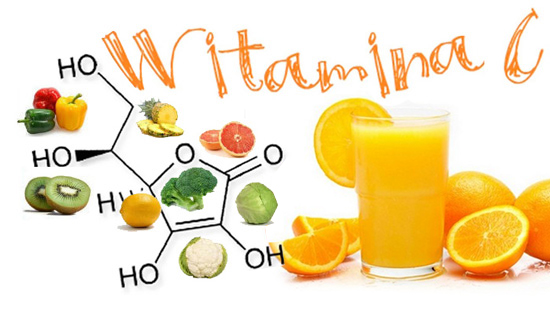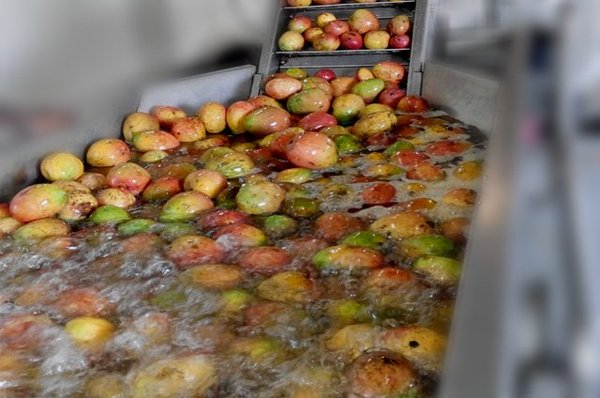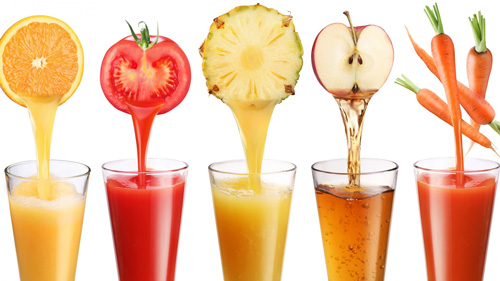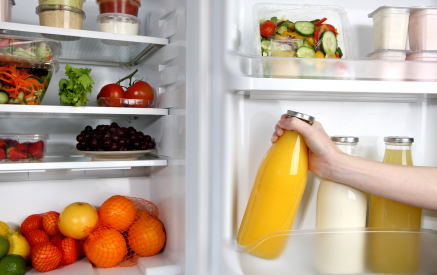Squeezing juice cause 80% Vitamin C lose
It is inevitable to have nutrition loss even you drink the fruit juice right after squeeze.
As we know, there are complex microstructure in fruit and vegetable cells. They are like separated rooms containing different substances and cannot mix together. For example, vitamin C is not supposed to contact with oxidizer or they will cause chemical reaction. However, high speed spinning of blades can easily destroy these cells and mix all the inner contents together. When vitamin C contact with various oxidizes, it suffer great losses. As an experiment reveals, the vitamin C destroy rate in cucumber is up to 80% after juicing. The same result goes for tomatoes and carriages.
Except for vitamin C, other antioxidant ingredient like flavonoids and anthocyanin also suffer different degrees of losses. In terms of insoluble fibers and calcium, most of the time they are removed during squeezing juice. So we recommend you to choose fiber-rich fruit juice, or drink the fruit pomace together with juice.

Bath fruits in hot water to preserve juice nutrition
In industrial juice production, blanching is an indispensible process before squeeze. Blanching means bath the fruit and vegetables in hot water so as to eliminate those oxidizing enzymes, and soften the sell tissues at the same time. With this treatment, the vitamin losses are greatly reduced, and the juice yield is improved. Besides, the extracted juice looks brighter in color, which are less easily to turn brown. Blanching before squeezing juice is more important for vegetables with less acidity, such as carrots, celery and sweet corn.
On another side, juice can never provide the satiety of eating fruits and vegetables. So drinking fruit juice doesn’t seem like an ideal choice for people who want to loose weight.

Juice nutrition loss keep on with time
Fruit juice is well recognized as nutritious drink. But many people are used to keeping it in store for long time before drinking it up. This is improper for the main nutrition has declined or totally disappeared during this period.
Juice contains the main nutritious content of fruits when it is first extracted. But as time goes on, the juice tastes not as sweet as original, and the color turn shallow. This is because the quantity of flavor components and natural pigment declines, together with the nutrition value. In addition, as the vitamin and other trace active matters are unstable in chemical property, they are easy to break down or lose activity. Products containing only mineral substance, dietary fibers and starch can be preserved for longer time without presenting obvious changes.

How long can fruit juice be stored?
Like most food, fruit juice have high reactivity, thus liable to lose nutrition when stored for long time. When an apple is extracted into juice, there remains some enzymes involved in the chemical reaction and change the juice quality. Therefore, choose fruit juice whose release date is near, and drink it up in time after opening the seal. Don't keep fruit juice in store for too long.
Among all nutrition contents in fruit juice, vitamin C is the most easy to get lost during storage. The loss rate of vitamin C ranges from 20% to 100% under different condition. Generally speaking, vitamin C can sustain longer time in highly acidic fruit juice, where vitamin C is more stable and microbes are not easy to reproduction.
Haw, grape and citrus juice can be stored in fridge for 3 to 5 days after opened, while low-acidic juice like peach and pear juice must be drank up within 2 days.


